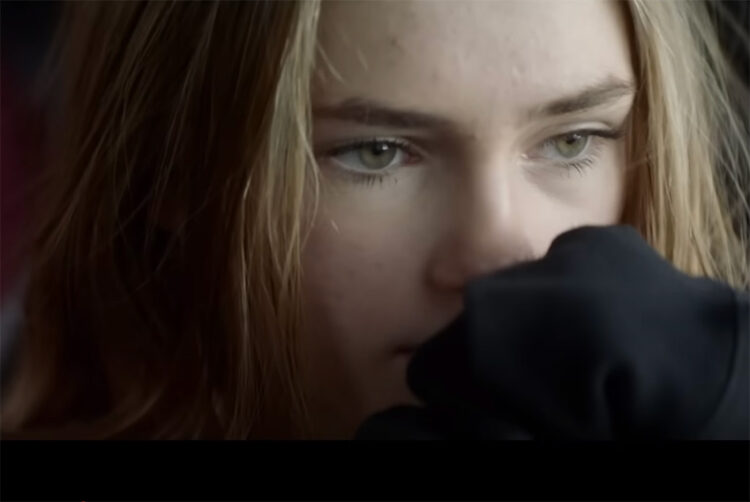How to truly celebrate the ‘unquestionable superpowers’ of neurodiversity

Opinion
Brands should think about increasing awareness, collaborating with neurodivergent people and improving communications so that their voices are heard.
It is estimated that 15-20% of the UK population is neurodivergent. This equates to 13m people who are autistic and/or ADHD or have OCD, DCD, dyslexia, dysgraphia, dyscalculia or Tourette’s.
Neurodivergent people may have differences in cognition, sensory processing and social communication; in other words, their brains are wired differently to neurotypical humans.
Many neurodivergent people have overlapping traits. For example, 30-65% of ADHD children have significant autistic traits.
The numbers of neurodivergent people are rising due to more accurate and inclusive diagnostic criteria and due to more people seeking diagnosis later in life.
According to a study first published in the Journal of Child Psychology and Psychiatry in 2021, autism diagnoses have increased 787% in the past 20 years. Research published in BJPsych Open showed that prescriptions for ADHD medication have jumped 800%.
Creative Equals data showed that 18% of staff working in agencies is neurodivergent. The British Interactive Marketing Association’s Tech Inclusion & Diversity Report found that autistic people are 16 times over-represented in the interactive marketing industry.
However, representation in media and advertising is almost non-existent, bar a brilliant ad by Vanish and a couple of thought-provoking BBC documentaries.
Neurodiversity still carries a stigma
Mainstream media, and therefore the public and brand marketers, still see autism, ADHD and other neurodivergence through the lens of deficits, disorders and deficiencies. This contrasts with the reality of millions of brilliant people making huge contributions to the economy and society, raising families, making scientific discoveries, opening businesses and creating tech and art.
Think Bill Gates, Steve Jobs, Greta Thunberg, Sir Anthony Hopkins, Chris Packham, Sally Wainwright, Jennifer Aniston, Cher, Daryl Hannah and many others. There are millions of ordinary people, too, who should not be ignored.
According to a recent study conducted by Birkbeck’s Research Centre for Neurodiversity at Work, commissioned by the charity Neurodiversity in Business, neurodivergent employees reported remarkable abilities and work strengths. And employers concur: over 80% reported hyper-focus, 78% creativity and 75% innovative thinking.
Breaking taboos will require media and brands to increase representation of neurodivergent people, accurately and sensitively, and join us in our activism to improve society to become more neurodiversity-friendly.
Mark Evans, board member of The Marketing Society, says: “The benefit for brands representing neurodivergent people is clearly to appeal to the widest possible consumer audience — it’s Marketing 101 — but also to attract neurodivergent talent to want to work for them in order to tap into their unquestionable superpowers.
“Indeed, while some people with neurodivergence might find archetypal aspects of work challenging, who cares when the prize is to tap into an abundance of creative talent and leaps of thinking? Remember that innovation comes from the edges.”
So what can brands do? There are three key aspects.
1. Increase awareness and understanding
Workplaces can support neurodivergent employees in a number of ways, from adopting more inclusive hiring practices to providing reasonable adjustments to encouraging awareness of neurodiversity and neurodivergence across the organisation.
2. Co-creation and collaboration
Reach out to neurodiversity charities and communities to understand neurodivergent people’s real-life experiences to co-create products and marketing campaigns.
Tom Richer, founder of The Bridge Between, a disability-inclusive research community, says: “Being neurodivergent myself and a carer for my autistic brother Jack, I have seen just how important a part brands play in our lives to have fun, communicate and bond with each other.
“For brands looking to engage with neurodiverse consumers authentically, I would always recommend community engagement, both online and in person. Collectively, there are a lot of brilliant people, initiatives and brands pushing for equity for disabled people.
“Brands should assess in which communities they already have a presence and where else they could make an impact in order to do good for their brand and the community.”
3. Marketing communications
Represent authentic stories of neurodivergent individuals and highlight their achievements, challenges and perspectives.
Don’t rely on stereotypes. The saying goes: “If you’ve met one autistic person, you’ve met one autistic person.” There is as much diversity within the neurodivergent community as there is within the neurotypical.
Most of all, try to show empathy and solve real-life challenges that neurodivergent people face. For example:
-
Supermarkets could sponsor sensory equipment for schools, just like they did with sports and gardening equipment.
-
Food brands could market themselves as being reassuringly consistent in taste, texture and packaging throughout the years to make life easier for its autistic consumers.
-
Tech platforms with a clean and intuitive interface could easily win neurodivergent fans by reducing the overwhelm.
-
And maybe the media could give us more space too — because we would like our voices to be heard.

 Ozoda Muminova (left) is director at The Good Insight. She and her son are on a pathway for autism diagnosis; Monika Pick works as a senior insight manager in the media industry and is the mother of an ADHD child
Ozoda Muminova (left) is director at The Good Insight. She and her son are on a pathway for autism diagnosis; Monika Pick works as a senior insight manager in the media industry and is the mother of an ADHD child




